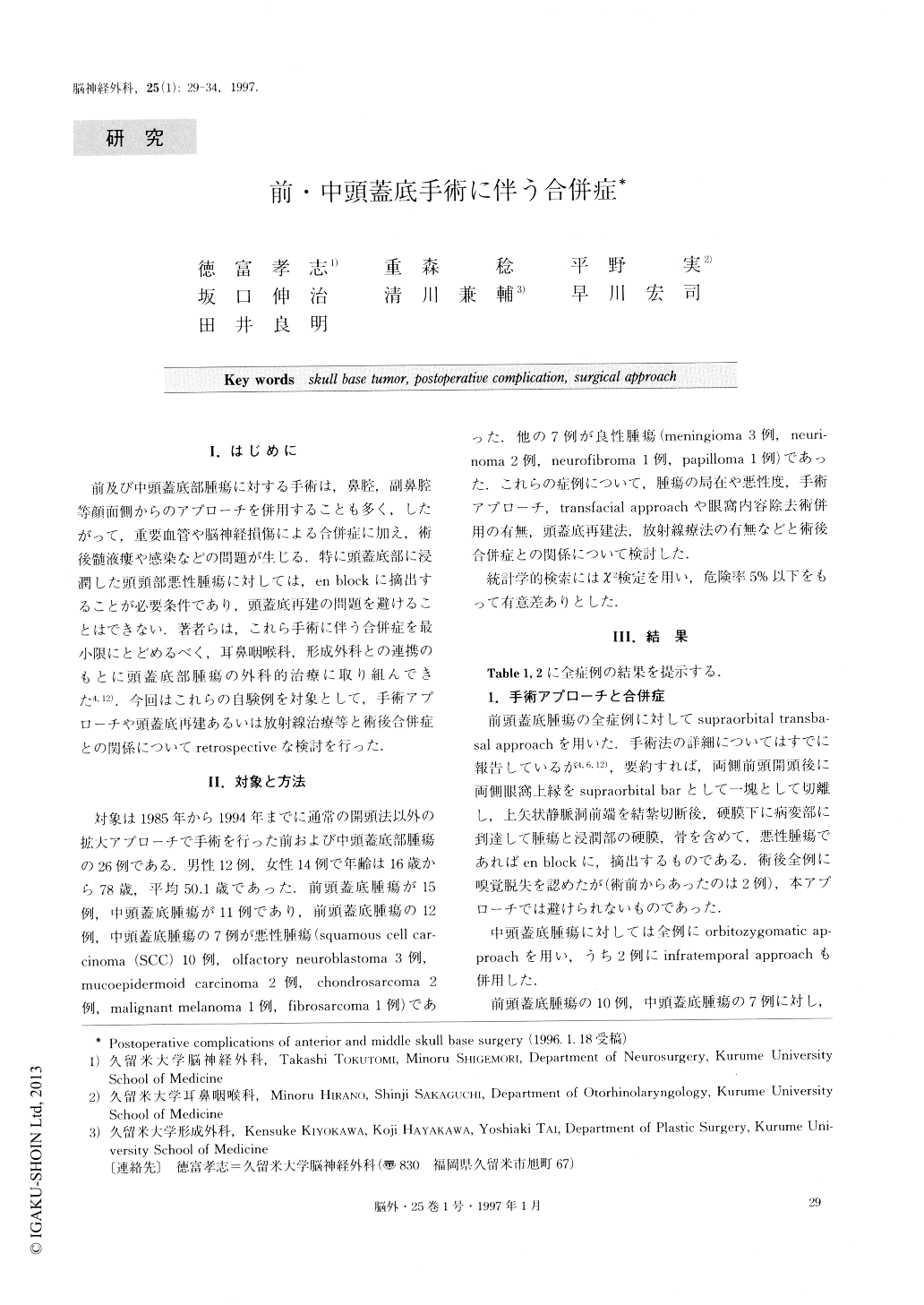Japanese
English
- 有料閲覧
- Abstract 文献概要
- 1ページ目 Look Inside
I.はじめに
前及び中頭蓋底部腫瘍に対する手術は,鼻腔,副鼻腔等顔面側からのアプローチを併用することも多く,したがって,重要血管や脳神経損傷による合併症に加え,術後髄液瘻や感染などの問題が生じる.特に頭蓋底部に浸潤した頭頸部悪性腫瘍に対しては,en blockに摘出することが必要条件であり,頭蓋底再建の問題を避けることはできない.著者らは,これら手術に伴う合併症を最小限にとどめるべく,耳鼻咽喉科,形成外科との連携のもとに頭蓋底部腫瘍の外科的治療に取り組んできた4,12).今回はこれらの自験例を対象として,手術アプローチや頭蓋底再建あるいは放射線治療等と術後合併症との関係についてretrospectiveな検討を行った.
The authors present the postoperative complications of skull base surgery based on a 10-year experience with 26 patients operated on via the supraorbital trans-basal or orbitozygomatic approach. The lesions in-cluded 19 malignant tumors and seven benign tumors. Postoperative cerebrospinal (CSF) leak occurred in one of the two patients in whom the dural defects were re-paired with a fascia lata graft. None of the remaining 24 patients who were repaired with a musculopericra-nial flap suffered postoperative CSF leak. Three pa-tients developed epidural abscess, but no infection was seen in the patients who had been reconstructed with a vascularized musculo-cutaneous flap to occlude the dead space. Preoperative radiation therapy correlated with a high incidence of postoperative infection. Cra-nial nerve deterioration or palsy occurred in four pa-tients. Intraoperative injury of the internal carotid artery occurred in one patient who developed severe neurological deterioration. After an average follow-up period of 40 months (range 12 to 109 months), 68% of patients with malignant tumors and 100% of patients with benign tumors were alive with no evidence of re-currence.

Copyright © 1997, Igaku-Shoin Ltd. All rights reserved.


